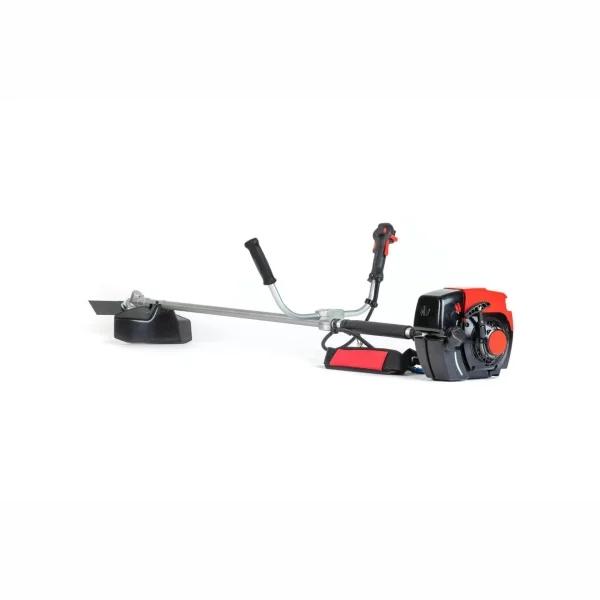No, it’s not just a signal that it’s cold. BRRRR is the acronym for a strategy real estate investors use to try to maximize opportunity in a hot housing market. Here are the basics, and tips for when it’s time to refinance.
What is the BRRRR method?
BRRRR stands for “Buy, Rehab, Rent, Refinance, Repeat.” Real estate investors use the BRRRR method to buy properties at an undervalued price, fix them up and find tenants for a passive source of income. At this point in the equation, the investor has completed BRR – buy, rehab and rent. The investor then teams with a mortgage lender that’ll do a cash-out refinance (the third “R”) to borrow more money to buy another undervalued home, checking off the final R: repeat.
While the BRRRR method involves some advanced-level real estate expertise, the thinking behind it is simple: Increase the value of distressed or older properties to make them attractive enough to rent, then leverage that appreciation to continue acquiring more properties for more rental income. Done right, the BRRRR method is a pathway to collecting passive income and building a large portfolio of rental properties. How successful you are, of course, depends on a number of factors, including how much you can save on the initial purchase price and how experienced you are budgeting for renovations and judging the rental market.
Example of the BRRRR strategy
Here’s a simplified scenario: Say you buy a foreclosed property for $150,000 with 20 percent down ($30,000) and renovate it to the tune of $50,000. So far, you’ve invested $80,000.
With a new kitchen, new bathroom and new floors, the property now appraises for $250,000, and you’re able to rent it out for $2,000 a month to cover the expenses on the initial loan and pocket some extra cash. (Of course, your exact rental price will need to align with the local market and also account for insurance, property taxes and other costs.)
Say you’re now at the point where you owe $115,000 on the initial $120,000 loan. While you’re earning rental income, you do a cash-out refinance for $187,500 – 75 percent of the newly appraised value. You pay off your first loan ($115,000), leaving you about $72,500 left over (less closing costs). You then use a portion of that to make a down payment on another foreclosure and use another part of it for rehab expenses. That cycle continues, with you rehabbing, renting and refinancing to take cash out.
How to finance a BRRRR property
Financing an investment property comes with additional requirements and considerations because the home isn’t going to be the roof over your head, and therefore riskier for lenders.
If you’re an investor interested in the BRRRR method, start by building a relationship with a local community bank, says Charles Tassell, chief operating officer at the National Real Estate Investors Association.
“That is the most critical aspect for an investor,” says Tassell. “Community banks understand individual investors better than large institutions, and they can be a bit more creative when it comes to making room for you in their portfolio.”
Expect the bank to scrutinize your background and experience as an investor. If you’re new to the game, it can be helpful to show your bank that your business plan includes local experts – reliable contractors, for example –- who can help you address the issues that can arise when buying properties in need of work, says Tassell.
Even with a solid working relationship and business plan, though, securing your loan isn’t going to happen overnight.
“Closing timelines have been all over the place,” says Tassell. “If you don’t have enough due diligence time, you can run into big issues. It’s important to have that conversation with a bank to put the correct timeline in place and save yourself a lot of trouble.”
Some real estate investors also look to hard money lenders to help finance their projects. These aren’t traditional like banks and credit unions, but the major advantage is the ability to get cash much faster. So, if you find a deal on a distressed property that you really don’t want to miss, a hard money lender can eliminate the long wait to closing. There are big downsides, though, so don’t make this your first route: Interest rates on hard money loans tend to be much higher compared to a mortgage, and often, these types of loans require you to pay more points upfront. They also tend to have much shorter loan terms.
Tips for the third R: Refinancing
You’ve completed the rehab, and now you’re ready to refinance a property that’s worth more than when you bought it.
First, consider when you closed your first loan versus now. Some lenders have seasoning requirements, which are restrictions around how soon you can refinance a loan. For example, your lender might want you to wait six months.
Consider the potential for additional fees and escrow payments, as well.
“A regular refinance will incur closing costs that investors will need to strongly consider if they refinance too frequently,” says Vikram Gupta, executive vice president and head of home equity at PNC Bank. “Typically, home equity refinancings don’t have closing costs, but they do have early closure fees, where a borrower will have to pay the prorated share of the closing costs if the loan is closed within three years. Borrowers should consider whether the cost savings associated with the refinance outweigh the closing costs in this rate environment.”
Regardless of how long you need to wait, also consider the tighter restrictions for cash-out refinances on investment properties.
“Underwriting is tightening up quite a bit” for commercial properties, says Tassell. “Loan-to-value ratio and credit scores are going to become much more important.”
Pros and cons of the BRRRR method
If you’re thinking about putting the BRRRR method to work, carefully consider the advantages and drawbacks of this real estate investment strategy.
Pros
- You could turn a profit without flipping the home. Instead of fixing up a distressed property and immediately selling it, renting helps you hold on to that value and earn regular passive income.
- You could build a network of rental properties without a massive overhead. Instead of making down payments with your own funds, the BRRRR method basically recycles your initial buy-in on the first property. You’re regularly using borrowed funds to increase the value of properties, and you’re building a portfolio of passive income-generating units.
Cons
- You might underestimate what a property needs. At first glance, a rehab might look fairly simple, but what’s underneath the surface can demolish your budget (literally). The most common mistake new investors make is spending too much without budgeting enough for the necessary expenses, says Tassell: “When you open up the wall for a repair and discover bigger issues with the property, your budget is thrown out the window. If you don’t have the capital, that can really sink you.”
- You have to be a landlord. Passive income might sound great, but you’re going to need to do the active work of a landlord – running credit checks on potential tenants, fixing problems with the property, paying for increased insurance and more. Bottom line: It takes time and effort to receive those monthly checks, and if you work a 9 to 5 or are otherwise strapped for time, this might be too much to take on.
- You have to be able to tolerate uncertainties and risks. What if your rehab doesn’t increase the value of the property as much as you expect? What if you overestimate how much money you’ll receive for rent – or have to deal with a vacancy? What if you have to deal with the challenges of evicting your tenant? What if you struggle to find additional properties? The BRRRR method is not for novice real estate investors – you need to be prepared to navigate a lot of challenges and complexities.





